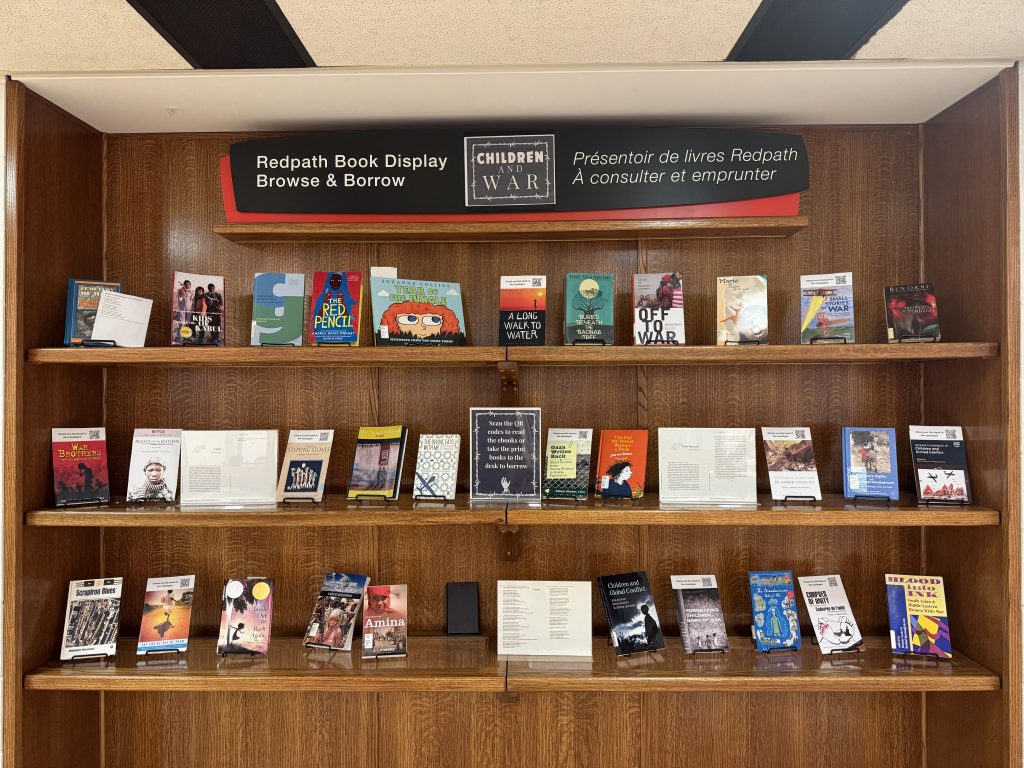Everywhere you look today, you will see signs of artificial intelligence (AI) all around you — from the apps on your phone to the algorithms behind the scenes. While AI might feel like a recent phenomenon, its roots trace back to the 1950s—making it older than Tim Hortons!
What’s changed is the surge of new AI tools now available to the public, transforming how we interact with technology. That is why you are hearing more and more about AI every day.
Below, you will find a few recommended reads from our Redpath Book Display for the month of September highlighting the topic of “Artificial Intelligence”. Have a good read!
- A citizen’s guide to artificial intelligence by John Zerilli, with John Danaher, James Maclaurin, Colin Gavaghan, Alistair Knott, Joy Liddicoat, and Merel Noorman.
A concise but informative overview of AI ethics and policy. Artificial intelligence, or AI for short, has generated a staggering amount of hype in the past several years. Authored by experts in fields ranging from computer science and law to philosophy and cognitive science, this book offers a concise overview of moral, political, legal and economic implications of AI. It covers the basics of AI’s latest permutation, machine learning, and considers issues such as transparency, bias, liability, privacy, and regulation. Both business and government have integrated algorithmic decision support systems into their daily operations, and the book explores the implications for our lives as citizens.
- A human algorithm: how artificial intelligence is redefining who we are by Flynn Coleman.
Groundbreaking narrative on the urgency of ethically designed AI and a guidebook to reimagining life in the era of intelligent technology A Human Algorithm: How Artificial Intelligence Is Redefining Who We Are examines the immense impact intelligent technology will have on humanity. These machines, while challenging our personal beliefs and our socio-economic world order, also have the potential to transform our health and well-being, alleviate poverty and suffering, and reveal the mysteries of intelligence and consciousness. International human rights attorney Flynn Coleman deftly argues that it is critical we instill values, ethics, and morals into our robots, algorithms, and other forms of AI. Equally important, we need to develop and implement laws, policies, and oversight mechanisms to protect us from tech’s insidious threats. To realize AI’s transcendent potential, Coleman advocates for inviting a diverse group of voices to participate in designing our intelligent machines and using our moral imagination to ensure that human rights, empathy, and equity are core principles of emerging technologies. Ultimately, A Human Algorithm is a clarion call for building a more humane future and moving conscientiously into a new frontier of our own design.
The United States has long been the leader in Artificial Intelligence. But Dr. Kai-Fu Lee–one of the world’s most respected experts on AI–reveals that China has caught up to the US at an astonishingly rapid pace. As Sino-American competition in AI heats up, Lee envisions China and the US forming a powerful duopoly in AI. He outlines the upheaval of traditional jobs, how the suddenly unemployed will find new ways of making their lives meaningful, and how the Chinese and American governments will have to cope with the changing economic landscape.
How will AI evolve and what major innovations are on the horizon? What will its impact be on the job market, economy, and society? What is the path toward human-level machine intelligence? What should we be concerned about as artificial intelligence advances? Architects of Intelligence contains a series of in-depth, one-to-one interviews where New York Times bestselling author, Martin Ford, uncovers the truth behind these questions from some of the brightest minds in the Artificial Intelligence community. Martin has wide-ranging conversations with twenty-three of the world’s foremost researchers and entrepreneurs working in AI and robotics.
- Introducing artificial intelligence by Henry Brighton & Howard Selina.
Addressing major issues in the design of intelligent machines, such as consciousness and environment, and covering everything from the influential groundwork of Alan Turing to the cutting-edge robots of today, Introducing Artificial Intelligence is a uniquely accessible illustrated introduction to this fascinating area of science.






